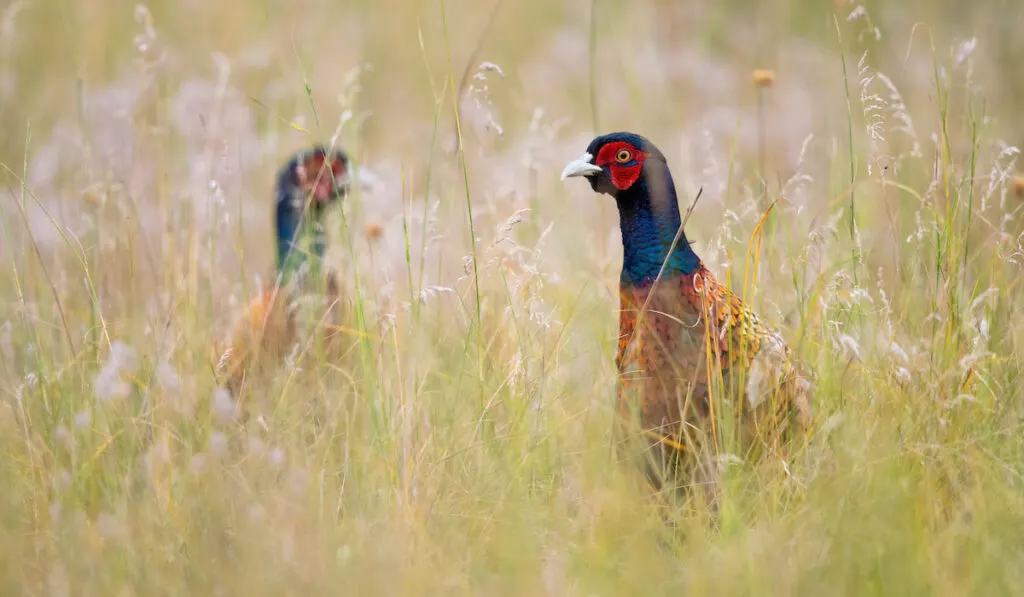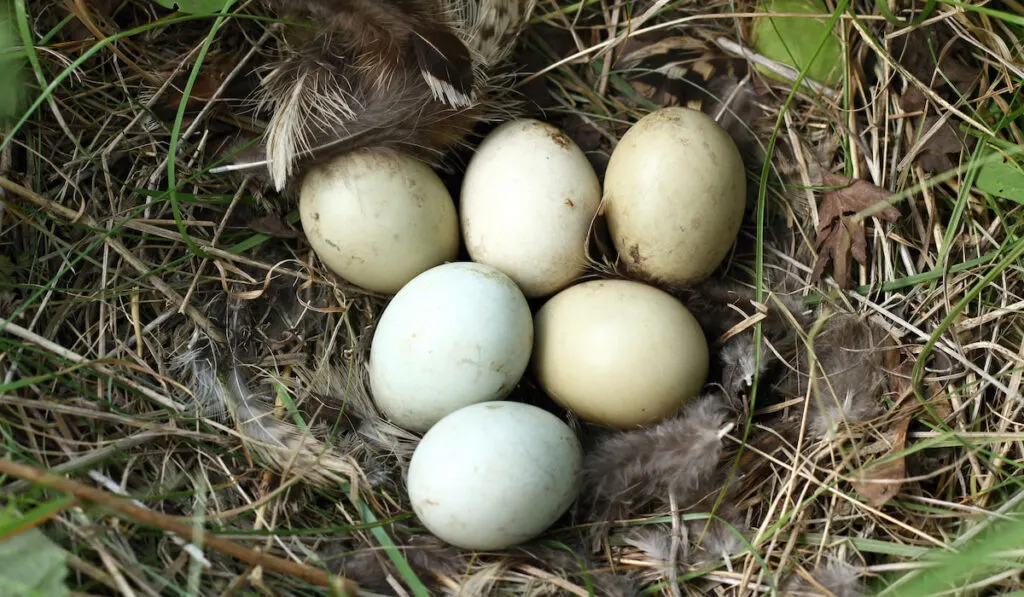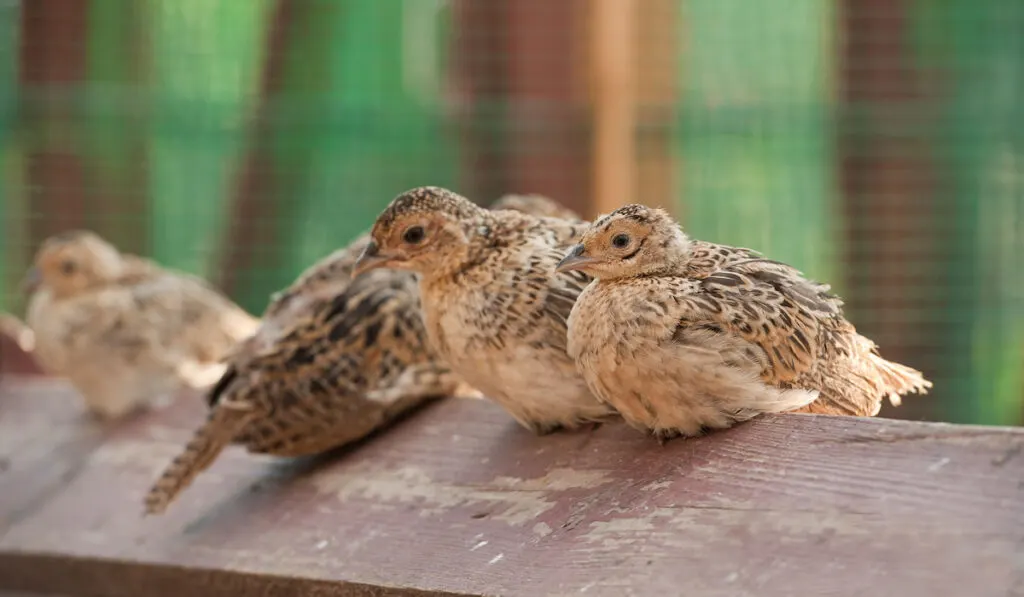Breeding pheasants and raising these beautiful game birds can be a lot of fun. It’s a great way to add different animals at home or on the farm, and breeding them yourself comes with a lot of satisfaction.
However, pheasants are different from chickens and other birds. They have a distinct breeding season when they lay a few dozen eggs every spring or summer.
Pheasants do lay eggs and, during the breeding season, you can usually count on an egg a day from each female bird. Pheasants lay usually from 40-60 eggs during their breeding season in the spring and summer. A good percentage of these eggs, when treated carefully, will hatch if fertilized.

Then the fun starts raising baby pheasants and seeing them grow into full-grown healthy birds.
The type of pheasant you breed will affect how many eggs they lay and the hatch percentage. There are, though, things you can do to make sure the eggs that your pheasant lays have the highest chances of hatching.
Here are some things to know about pheasants and how they lay eggs.
Table of Contents
Pheasants vs Chickens
Millions of people in the U.S. have experience with chickens. You can work on a chicken farm or raise them in your backyard. You can order chicks in the mail and buy the tools you need to build a coop at your local hardware store.
These days, chickens are becoming even more common as household pets. Parents use them to teach kids responsibility, and there’s nothing quite like cooking up breakfast with eggs that you harvested from your own flock.
When people want something a bit different, they think about raising pheasants. These are beautiful birds that will look great on your property, but it’s important to remember that these are game birds.
When it comes to raising pheasants, do they lay eggs like chickens? With hens, you can count on an egg, in most cases, almost every day of the week all year long. Pheasants, though, are different.
Pheasants lay usually from 40-60 eggs during their breeding season in the spring and summer.
The Right Male to Female Ratio
Do they lay eggs without a male present? The answer to this question is yes, they do. However, as you can probably guess, they won’t hatch without a male pheasant present.
Typically, you’ll want one rooster for every 10 hens or so. This will keep everyone happy without any fights breaking out.
Do Female Pheasants Sit On Their Eggs?
After laying all of their eggs, the female pheasant will lay on them and incubate them for around 30 days. Sometimes they’ll hatch faster, other times longer.
If you find that your pheasants aren’t sitting on their eggs, you can construct an artificial incubator to help them hatch.

What You Can Do with the Pheasant Eggs
A lot of people ask us, “Can you eat pheasant eggs?” The eggs are edible, and many people eat them. They’re about half as big as chicken eggs, and have dark yellow yolks.
They don’t taste the same as chicken eggs do, so don’t count on that. You can boil them, fry them, or cook them any other way you would prepare chicken eggs.
How Old Are Pheasants When They Start Laying Eggs?
When you’re raising pheasants, you can count on them to start laying eggs when they reach around 10 months old. You can probably expect them to make around two nests each breeding season, and they’ll typically lay a couple dozen eggs in each.
What to Do with Hatchlings
Once your pheasant lays eggs and they’re ready to hatch, you need to make sure you’ve got everything in place to keep them warm and healthy.
Unfortunately, most pheasant owners, and most poultry owners in general, deal with the death of chicks frequently. These are fragile creatures when they hatch, and you’ve got to get the feeding and conditions down right to keep as many of them alive as possible.
Here are some things you should do:
Climate Control
Chicks need to stay warm when they’re born. They don’t have enough feathers developed to withstand the cold. Generally, you need to keep chicks between 90-92 degrees Fahrenheit.
You can tell if they’re too cold if they’re piling on top of each other in the center of the enclosure to try and stay warm. Things can also get too hot for them. Young chicks can dehydrate easily.
Once dehydrated, it’s much easier for them to die.
The Right Litter
Pheasant and any other poultry owners know how important it is to lay down litter to dull the effects of droppings. However, young chicks can eat sawdust and other things like hay particles.
If eaten, it can make them sick or block their gizzards and kill them. For the first couple of weeks, think about laying down a sheet over the litter to stop them from pecking at it.

Space
Overcrowding can stress out your chicks. They can also get hurt if they get trampled by the rest of the chicks. Make sure you have enough room where you’re keeping them so they have enough room to walk around and get some exercise.
Game Bird Starter
Baby pheasants shouldn’t eat chicken starter. They should be eating game bird starter. Buy food that is as fresh as you can to guarantee that it’s still got the necessary vitamins inside it to raise healthy baby pheasants.
Water
Change out the water daily for fresh water that’s clean. Your birds will be more eager to drink fresh water and it will stop any bacteria from getting into their immune systems.
Dirty water can make the young birds sick and the illness can spread across the hatchlings very quickly.
These are just some tips on raising great baby pheasants. These are lovely birds that are a lot of fun to raise and a great way to mix up your animals if you’re already caring for chickens.
